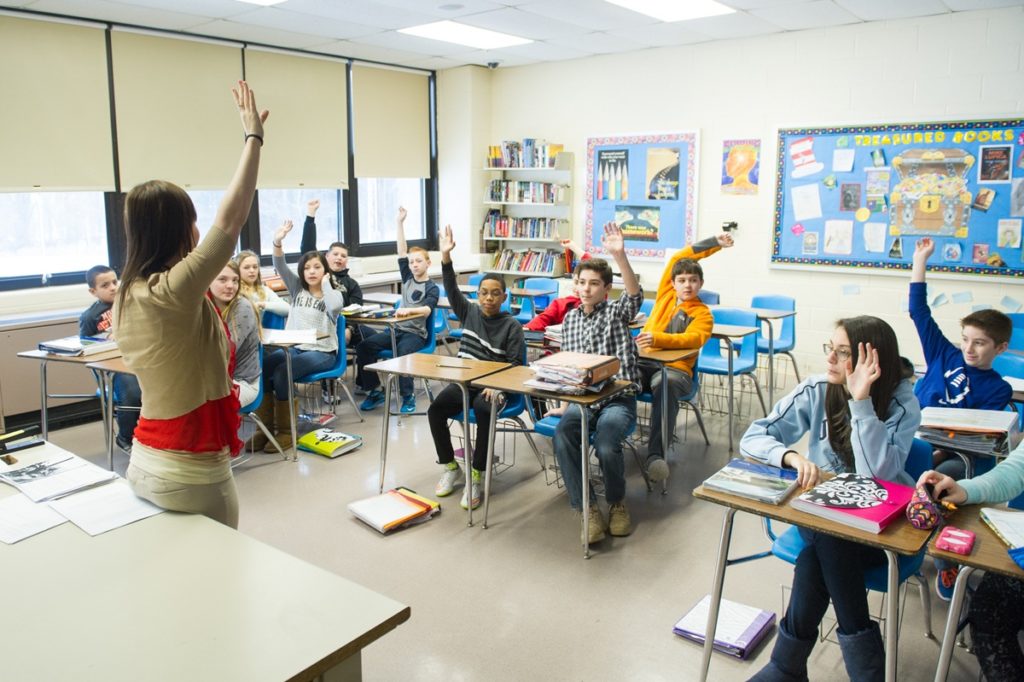Here is a step-by-step example of how it might look and sound for a teacher to use Interactive Modeling to teach students a signal for attention.
1. Describe a positive behavior you will model.
“Sometimes when we’re having conversations or working on something in the circle, I’ll need you to stop, look, and listen to me right away. When I do, I’ll raise my hand and be quiet. When you notice, you do the same. Watch and see what that looks like.”
2. Model the behavior.
Designate a student to pretend to be the teacher. Pretend you’re taking notes on a clipboard. When you see the pretend teacher raise his hand, stop what you’re doing, put down your pencil, raise your hand, and look at the teacher. Remain silent.
3. Ask students what they noticed.
“What did you notice about how I gave my attention to Aaron?” (If necessary, follow up with questions such as “What did you notice about what I did first?” to prompt students to list important elements: stopping, putting everything down, raising your hand, looking at him and being quiet, etc.)
4. Ask students to model the same behavior.
“Who can show us how to respond to the signal the same way I did?”
5. Ask students what they noticed.
“What did you notice about how Eli responded to the signal?” The children name specific positive behaviors they noticed.
6. Have the class practice.
“Now we’re all going to practice responding. I’ll be watching to see how well you do all the things Eli and I just modeled.”
7. Provide feedback.
“Here’s what I noticed: You all stopped talking, raised your hands, looked at me, and were ready to listen in fifteen seconds. That’s very efficient and will help keep our days on track.”
